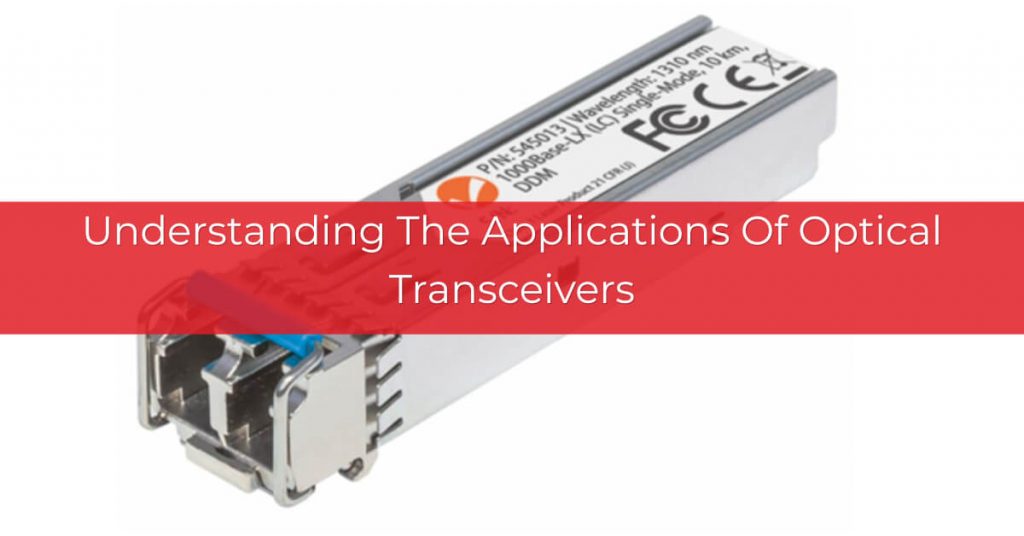Comprehensive Facts On The Applications Of Optical Transceivers
In the networking industry, getting the most of it all may imply utilizing various options. You may have to use a broad range of different yet flexible network modules to cover your networking needs. In our case, an optical transceiver is a perfect option. This device uses fiber optical technology in sending as well as receiving data.
At the same time, it has electronic components used in the conditioning as well as encoding data into various light pulses. After that, these impulses are transported to the opposite side of the channel as an electrical signal. For the device to transfer data as light, light must be utilized. Usually, the light is controlled using various electronic parts. Also, to receive such light pulses, a photodiode semiconductor is used. In this article, we highlight the essential facts and applications of optical transceivers.
- Fiber Optic Transmitters
LEDs and Fabry-perots are some of the lasers used in transmitting light through fiber optic cables. Their lasers, coupled with vertical-cavity surfaces, can easily convert electrical waves into different optical signals. These chips are small semiconductors used in receiving information.
They are also detectors utilized in converting optical signals into electrical signals. With that said, silicon photodiodes are often utilized for short wavelength links of up to 650 POF. Long-wavelength systems utilize indium gallium arsenide detectors.
- Turning Data Into Viable Light
Networking technologies are commonly used for connecting different computer systems. In the long run, the idea is usually to create a local area network using different protocols that can easily control the transmission of information while evading simultaneous transmissions using two to more systems.
Thus, an optical transceiver is used as a standard technology for synchronizing data transmission on the optical media. This technology offers a faster yet affordable channel for data transfer. This is as compared to other traditional technologies.
- Converting Light Into Data
An optical transceiver is also known as a wavelength with a particular laser used in converting electrical data signals from switches to optical signals. Note, this signal can then be transported to optical fibers. In the end, every element of the data stream will be converted into a signal that has a particular wavelength. This implies that every data stream will effectively be unique in colour.
Secondly, these light signals have wavelengths of up to 800 nm by 1500 nm. Other than that, they also have unique physical properties that support the transfer of data and light from one point to another. Every channel is transparent to some form of data. It implies that a mix of features of WAN and SAN can be utilized in the voice as well as video services.
- Understanding Applications Of A Transceiver Form Factor
A transceiver’s form factor is a device that majorly specifies the physical dimensions of your transceiver. In many cases, the size of the device varies depending on the speed as well as the protocol of the invention. Over time, the device tends to become big with the increasing line speed.
To facilitate the operations of these devices, manufacturers often opt to design a transceiver form factor according to a blueprint known as Multisource Agreement. This is known as the primary standard for making sure that the transceivers, even though from different manufacturers, have a uniform design coupled with functionality.
- Different Wavelengths For Transceivers
Optical transceivers have different wavelengths which determine the amount of data that needs to be transported. It also determines the speed as well as distances. Different yet unique transceivers have various tasks. With that said, there are three major categories of transceivers, namely grey, single fiber, and CWDM.
The standard grey transceiver is also known as a single-channel docket. Its signals are mainly colored wavelengths. These transceivers have two primary applications. For starters, they can easily be connected to a single channel of fiber in order to transport information in the form of light over a data channel of router. At the same time, an optical transceiver can efficiently serve as an interface on the transponder system.
- Transceivers In Radio
For those who work in the radio industry, a transceiver is a unit that has a receiver as well as a transmitter. From the founding days of the industry, the receiver, as well as the transmitter, was majorly separate units that have since served different departments.
Over the years, radio operators became an evolving aspect of the industry. Almost all the modern amateur equipment used in radio transmission has evolved into a transceiver. Over the years, radio transmissions have majorly occurred using transceivers. Today, these devices are commonly utilized in the broadcasting sector.
- Transceivers In Telephone
In the telephone industry, transceivers are majorly used to facilitate communication using transmitters. The transmitter will receive data from the audio. After that, it will transport the information to the base unit using a tinsel wire. The telephone, being cordless, utilizes a unique radio transmitter coupled with a transceiver from a handset. A modern transceiver, on the other hand, sends and receives signals.
Take-Home
An optical data cable transceiver is often used to transmit light and energy through a fiber. In many cases, transceivers are known to have two primary ports. One channel is commonly used in communication precisely for sending information, and the other is used to receive transmissions. At the same time, a single cable may easily be used to transmit data in the opposite direction. However, the end of the device has a unique connector that can be used for fitting it into a particular Ethernet model.
Lastly, an optical transceiver is an essential element in the communication sector. It is often used in the transmission of vital data and information from one end of the cable to the other. For an individual to be in a position to use this device, they must understand the nature of its operations. In this article, we have highlighted every crucial aspect for you.

